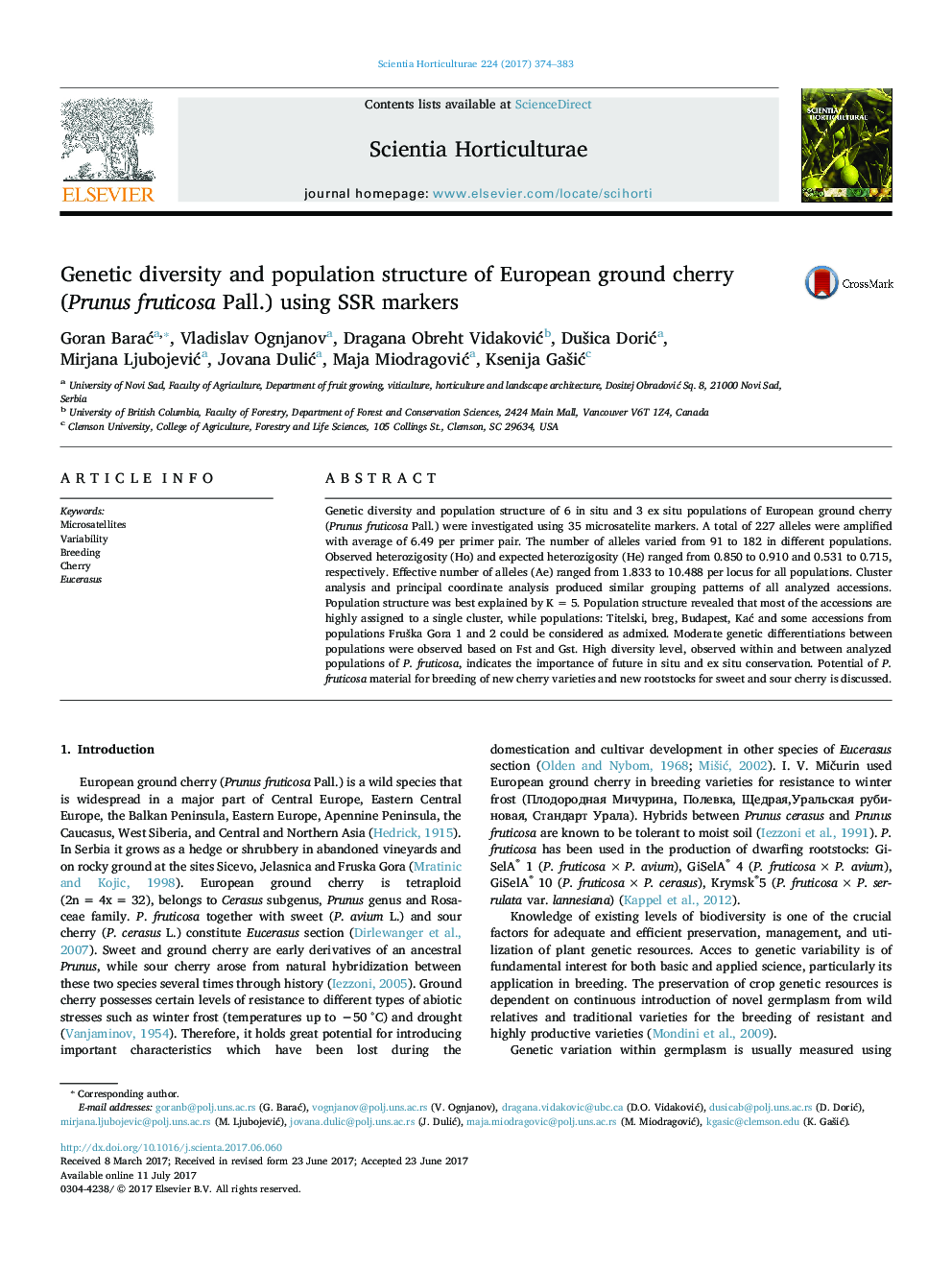| Article ID | Journal | Published Year | Pages | File Type |
|---|---|---|---|---|
| 5769433 | Scientia Horticulturae | 2017 | 10 Pages |
â¢High diversity levels within and between Prunus fruticosa populations.â¢Population structure best explained by K = 5.â¢Genetic differentiations between populations within the moderate limits.â¢P. fruticosa holds great potential for breeding new cherry varieties and rootstocks.
Genetic diversity and population structure of 6 in situ and 3 ex situ populations of European ground cherry (Prunus fruticosa Pall.) were investigated using 35 microsatelite markers. A total of 227 alleles were amplified with average of 6.49 per primer pair. The number of alleles varied from 91 to 182 in different populations. Observed heterozigosity (Ho) and expected heterozigosity (He) ranged from 0.850 to 0.910 and 0.531 to 0.715, respectively. Effective number of alleles (Ae) ranged from 1.833 to 10.488 per locus for all populations. Cluster analysis and principal coordinate analysis produced similar grouping patterns of all analyzed accessions. Population structure was best explained by K = 5. Population structure revealed that most of the accessions are highly assigned to a single cluster, while populations: Titelski, breg, Budapest, KaÄ and some accessions from populations FruÅ¡ka Gora 1 and 2 could be considered as admixed. Moderate genetic differentiations between populations were observed based on Fst and Gst. High diversity level, observed within and between analyzed populations of P. fruticosa, indicates the importance of future in situ and ex situ conservation. Potential of P. fruticosa material for breeding of new cherry varieties and new rootstocks for sweet and sour cherry is discussed.
